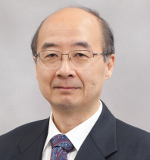Video of the week
|
|
Video: SLAC Multimedia Team / Matt Beardsley
SLAC's new time-lapse videos, ranging from 13 to 72 seconds in length, show various sped-up scenes around the lab: clouds rolling above the klystron gallery, scientists keeping busy in the Main Control Center, and, shown here, a zipping tour of the Linac Coherent Light Source (LCLS).
Fly from one end of LCLS to the other in a lightning-quick 72 seconds to see how much fun it can be. |
In the News
-
from Science News
2 April 2012
BOSS, for Baryon Oscillation Spectroscopic Survey, has measured the distance to faraway galaxies more precisely than ever before, mapping the universe as it existed roughly 6 billion years ago, when it was only 63 percent of its current size. The findings suggest that the mysterious “dark energy” causing the universe to expand at an accelerating rate was foreseen by Einstein, the researchers reported April 1 at the American Physical Society meeting.
-
from The Washington Post
2 April 2012
Still, after years of research and billions of dollars invested, we haven’t produced definitive evidence that the Higgs boson is real, leaving open the possibility that a decades-old, widely believed theory is completely wrong.
-
from Science
30 March 2012
This week, the U.S. Department of Energy (DOE) cited a tight budget in putting the brakes on the development of the flagship project for the next decade at the country’s sole particle physics lab, Fermi National Accelerator Laboratory (Fermilab) in Batavia, Illinois. But if the $1.5 billion Long-Baseline Neutrino Experiment (LBNE) is delayed, then Japanese physicists may be able to do a similar experiment first, researchers say.
Best of April Fool’s Day
from TRIUMF
1 April 2012
Effective Sunday, April 1, 2012, the laboratory formerly known as TRIUMF will be called “CALCIUM,” an acronym for CAnada’s Laboratory for Chemistry, Isotopes, Unknowns, and Medicine.
from CERN’s blog
1 April 2012
The new particle, called a foolion, had been proposed by theorists to explain how elementary particles could attract so much attention.(…) Scientists from the ATLAS and CMS collaborations are now studying the possibility of moving their detectors to the island of Tristan da Cunha to confirm the findings.
from CERN Bulletin
1 April 2012
As clear physics evidence of the Higgs is still pending and expected to be established in 2012, the CERN Computer Centre operators have instead rearranged their computer racks in the Computer Centre (Building 513) to spell the word “Higgs”.
from Fermilab Today
1 April 2012
“We call it the High Acceleration Linear Lumos of W boson to Strange, or HALLoWS,” said Roger Dixon, head of the Accelerator Division. “The design is based on an obscure paper by J.K. Rowling who first postulated this idea in the mid-1990s.” HALLoWS consists of three accelerators: a linear accelerator called ELDER, a trilateral accelerator called CLOAK and a cyclotron called stoNE.
from USLHC’s blog
1 April 2012
Given the size of Luno, we should be able to see the large figure as well, but all searches have been fruitless. Some people think that this figure may be even harder to find than SUSY, or even extra dimensions (outside of the Terry Pratchett universe.)
from Futura-Sciences
1 April 2012
Mais il y aurait encore plus étonnant : les documents mayas révéleraient que non seulement les neutrinos muoniques peuvent aller plus vite que la lumière, que l’on peut s’en servir pour communiquer entre civilisations galactiques mais également qu’un nouveau contact avec nous serait tenté par nos visiteurs E.T. le 21 décembre 2012, par le biais des neutrinos.
Copyright © 2026 ILC International Development Team




